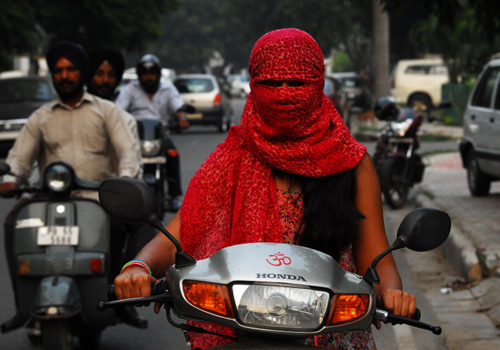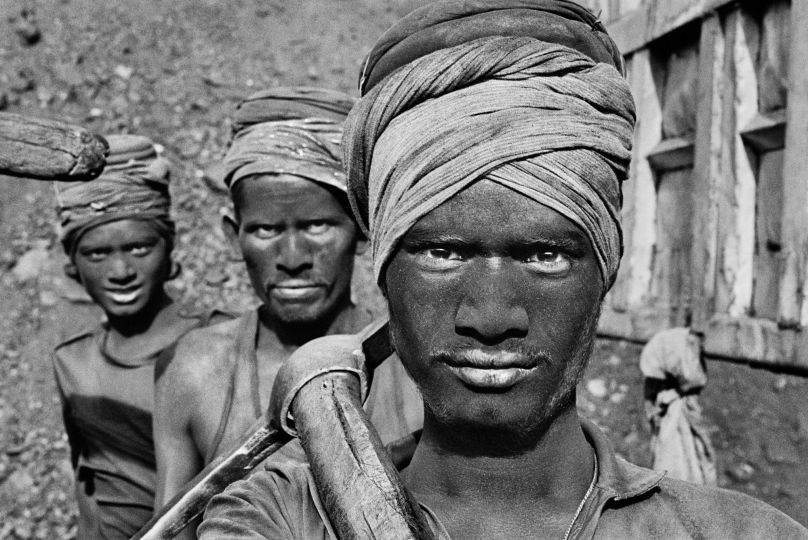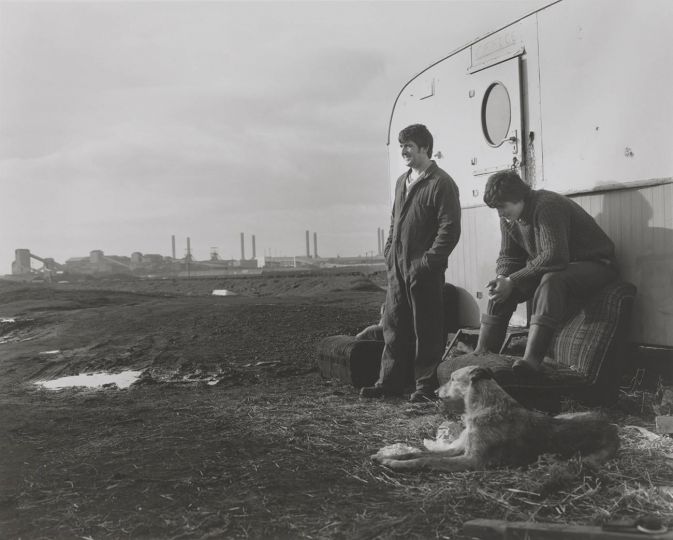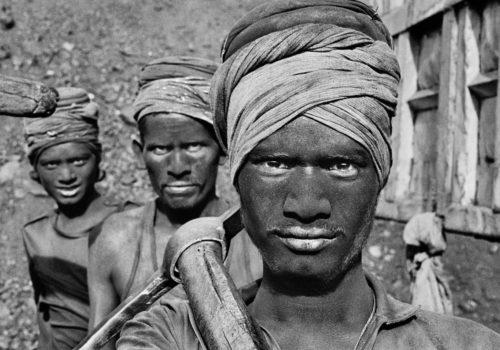They are neither bandits nor queens, but active and vibrant women who, with an air about them of nonchalance, go about their business of living in the Le Corbusier-designed city of Chandigarh, transporting themselves crosstown on their scooters with their faces wrapped completely (leaving a narrow open slit for the eyes) in colorful scarves. For me they evoked the spirit of daredevil freedom as personified in the image of the real-life female bandit-turned-politician named Phoolan Devi who decades earlier had defied and taken revenge on her gang-rapists in North India.
They came to my notice almost immediately on my return after ten years to India and to Chandigarh in September of 2014. I was struck by the unusual, bold and flamboyant way in which they covered their faces. There was a note of mystery about them. At first I assumed this was done to protect themselves from the increasing air pollution in India; but why the whole face, I wondered and asked my relatives and friends. Their answers were surprisingly vague: while some suggested it was indeed the pollution that caused women (and some men as well) to use their scarves as masks for breathing, others mentioned the fear of becoming dark-skinned (considered unattractive in females in India) from the sun that forced these young ladies to cover their entire faces when they went outdoors. Still others mentioned, albeit half-jokingly, that the girls hid themselves in this way from being recognized when they went for rendezvous with their boyfriends.
In my family circles I asked a few young ladies themselves, and even their answers were not definitive. Was it a case of one not knowing exactly why one behaves or dresses in a certain way based on what one’s peers are doing? Is it a matter of a new wave of fashion in this most modern of Indian cities? Are new fashion-designers creating special scarves to be used in this way? It’s almost as if there is a continuous fashion show on Chandigarh’s roads with runway parade of variations on one theme.
Whatever it is, I felt transfixed by it during my walks in the city that itself seems to have undergone a reincarnation from being a quiet, sparsely-populated new experiment in town-planning a few decades ago into a metropolis on the go. Along with world-class educational institutions and an IT campus with global corporations’ offices, Chandigarh now has western-style shopping malls, fancy restaurants offering international cuisine and traffic jams at rush-hours, with youth-oriented culture as ambitious about its image in the world as the city itself.
Arvind Garg
















